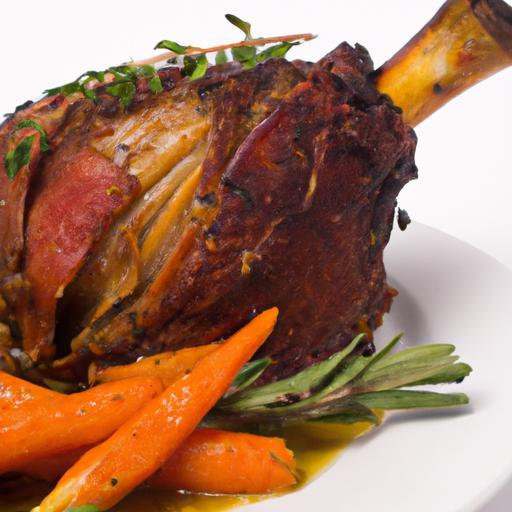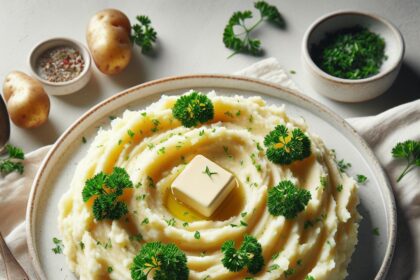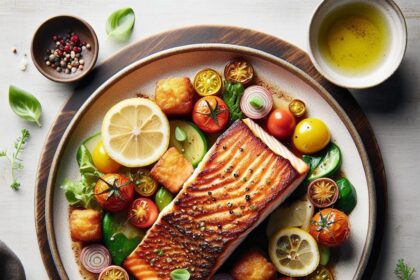In the world of slow cooking, the difference between “low” and “high” settings is more than just a dial twist – it’s a gateway to unlocking deep, irresistible flavors hidden within your ingredients. Whether you’re simmering a hearty stew or softening a tough cut of meat, understanding how these temperatures work can transform your culinary creations from good to unforgettable. Join us as we uncover the science and art behind low vs. high on a slow cooker, revealing how time and heat combine to craft mouthwatering meals that tell stories with every bite.
Understanding Temperature Basics in Slow Cooking: How Low Heat Enhances Flavor and Texture Over Time
Low vs. High on a Slow Cooker is a culinary secret that can transform simple ingredients into deeply flavorful, melt-in-your-mouth masterpieces. Embracing the art of temperature control in slow cooking means unlocking layers of taste and texture that only time and gentle heat can reveal.
When you choose the low setting, you allow the ingredients to gradually mingle and soften, developing rich, complex flavors. This method is perfect for tougher cuts of meat, hearty stews, or dishes that benefit from slow collagen breakdown. Over several hours, low heat ensures each bite becomes tender while preserving moisture and intensifying aromas. It’s like letting your dish enjoy a slow dance, enhancing every note of seasoning and texture.
When High Heat is Your Best Bet for Quick, Tasty Meals
Conversely, high heat speeds up the cooking process, ideal for rushed evenings or last-minute meals. High on a slow cooker excels at cooking vegetables and lean proteins faster while still extracting good flavor. It’s excellent for soups or casseroles that need to be ready within four hours or less, offering a balance between convenience and taste. However, the faster pace means some depth of flavor achieved by simmering slowly may not fully develop, so it’s best utilized when time is limited.
Expert Tips for Choosing the Right Setting Every Time
- Consider Your Protein: Tougher meats like brisket or pork shoulder shine on low heat, while tender cuts like chicken breasts do well on high.
- Know Your Timing: Plan for 6-8 hours on low or 3-4 hours on high depending on your recipe’s requirements.
- Don’t Peek Too Often: Lifting the lid releases heat and can prolong cooking times. Trust the slow cooker to do its magic.
- Use a Thermometer: For safety and perfect results, check that your meat reaches the ideal internal temperature.
- Adjust Seasonings: Salt and delicate herbs can lose potency with long cooking-add these toward the end for freshness.
Prep and Cook Time
- Preparation: 15 minutes
- Cooking at Low: 6 to 8 hours
- Cooking at High: 3 to 4 hours
Yield
Serves 6 generous portions
Difficulty Level
Easy
Ingredients
- 2 lbs beef chuck roast, cut into large chunks
- 1 large onion, sliced
- 3 cloves garlic, minced
- 2 cups beef broth
- 1 cup carrots, chopped
- 1 cup celery, chopped
- 2 tbsp tomato paste
- 1 tbsp Worcestershire sauce
- 1 tsp dried thyme
- 1 tsp smoked paprika
- Salt and pepper to taste
- 2 tbsp olive oil for browning
Instructions
- Brown the Meat: Heat olive oil in a skillet over medium-high heat. Add beef chunks, sauté until golden brown on all sides, about 5 minutes, stirring occasionally to prevent sticking.
- Sauté Aromatics: Add sliced onion and garlic to the skillet, cooking until translucent, about 3 minutes. This step enhances the base flavors before slow cooking.
- Transfer to Slow Cooker: Place the seared beef and sautéed onions and garlic into the slow cooker insert.
- Add Vegetables and Liquids: Stir in carrots, celery, beef broth, tomato paste, Worcestershire sauce, thyme, smoked paprika, salt, and pepper.
- Set Temperature: Choose Low for 7-8 hours or High for 3-4 hours, depending on your schedule and desired tenderness.
- Cook Uncovered or Covered: Keep the lid on during cooking to retain moisture. Avoid opening frequently to prevent heat loss.
- Finish and Serve: Once done, check seasoning and adjust if necessary. For thicker sauce, remove meat and simmer liquid on high in a pan until reduced.
Chef’s Notes & Tips for Success
- Meat Choice: Chuck roast is ideal for low and slow cooking due to its marbling. Substitute with pork shoulder for a different flavor profile.
- Vegetables: Root vegetables and hearty greens work beautifully. Add delicate items like peas toward the end of cooking.
- Make-Ahead: Prep ingredients the night before and refrigerate. Start the slow cooker in the morning for dinner-ready meals.
- Cooking Times: If unsure, opt for low and longer cooking-overcooking on low rarely ruins the dish.
- Enhance Flavor: Deglaze the skillet with a splash of red wine or broth after browning meat to incorporate browned bits.
Serving Suggestions
Present this rich slow-cooked beef over creamy mashed potatoes or buttered egg noodles. Garnish with fresh parsley or thyme sprigs for a pop of color. A side of roasted root vegetables or a crisp salad provides a delightful contrast in texture. For an extra layer of luxury, drizzle a bit of the reduced cooking liquid over the top before serving.
| Nutrient | Per Serving |
|---|---|
| Calories | 450 kcal |
| Protein | 38 g |
| Carbohydrates | 15 g |
| Fat | 22 g |

Explore more slow cooker secrets in our complete guide to slow cooker braises and stews. For food safety tips when slow cooking meats, visit USDA Food Safety Basics.
Q&A
Q&A: Low vs. High on a Slow Cooker – Unlocking Flavor Secrets
Q1: What’s the real difference between the low and high settings on a slow cooker?
A1: Think of the low setting as the slow dance of cooking-gently coaxing ingredients to release their deepest flavors over time. The high setting, on the other hand, is more like a brisk waltz-faster heat penetration that gets your meal ready quickly but may sacrifice some nuanced tastes along the way.
Q2: Does cooking on low really make food taste better?
A2: Often, yes! Cooking low and slow allows tough cuts of meat to tenderize and spices to marry more fully. This slow heat breaks down collagen in meats and melds flavors into a harmonious symphony rather than a quick burst.
Q3: How much longer does cooking on low take compared to high?
A3: A general rule of thumb is that 8 hours on low equals about 4 hours on high. However, it depends on your recipe and slow cooker model. Patience is key-the slow cooker’s slow setting is all about time as an ingredient.
Q4: Are there foods better suited for high or low settings?
A4: Absolutely! Root vegetables, tougher meats, and beans benefit from the low setting’s gentle heat. Quick-cooking veggies or dishes you need in a hurry might do just fine on high but watch for overcooking or dryness.
Q5: Can I switch settings halfway through cooking?
A5: You can! Some cooks start on high to jump-start the cooking process, then switch to low to finish tenderizing and flavor developing. Just be cautious with timing to avoid undercooking or drying out.
Q6: Does the slow cooker retain more nutrients at low or high settings?
A6: The slow cooker’s sealed environment generally preserves nutrients well, but gentler heat on low can help prevent breakdown of heat-sensitive vitamins. It’s a win-win for flavor and nutrition.
Q7: How do low and high settings affect texture?
A7: Low heat slowly softens fibers, resulting in luxuriously tender textures. High heat risks overcooking outer layers before the inside is tender, sometimes leading to uneven or mushy textures.
Q8: Any tips to make the most of low or high slow cooking?
A8: For low, plan ahead and resist peeking-every lift of the lid releases heat and slows cooking. For high, chop ingredients uniformly to ensure even cooking, and avoid overfilling the cooker for best results.
Q9: Can I use the low setting overnight safely?
A9: Yes! That’s one of the greatest perks of slow cooking on low-you can set it before bed and wake up to a flavorful, ready-made meal. Just ensure your cooker is in a safe place away from flammable items.
Q10: What flavor secrets does the slow cooker reveal when using low vs. high?
A10: On low, complexity unfolds-a subtle sweetness, robust umami, and deep savory notes develop as ingredients mingle slowly. On high, flavors are more straightforward and pronounced but with less depth. Choosing between them unlocks different dining experiences from the very same pot.
To Wrap It Up
As the savory aromas waft from your slow cooker, the choice between Low and High settings transforms from a simple dial twist into a culinary secret waiting to be unlocked. Whether you opt for the patient, soul-soothing simmer of Low or the brisk, flavor-fast track of High, understanding these tempos empowers you to tailor your dishes with precision and passion. So next time you set that slow cooker in motion, remember: it’s not just about cooking-it’s about coaxing every note of flavor to sing in perfect harmony. Low or High, the real magic is in your hands.








